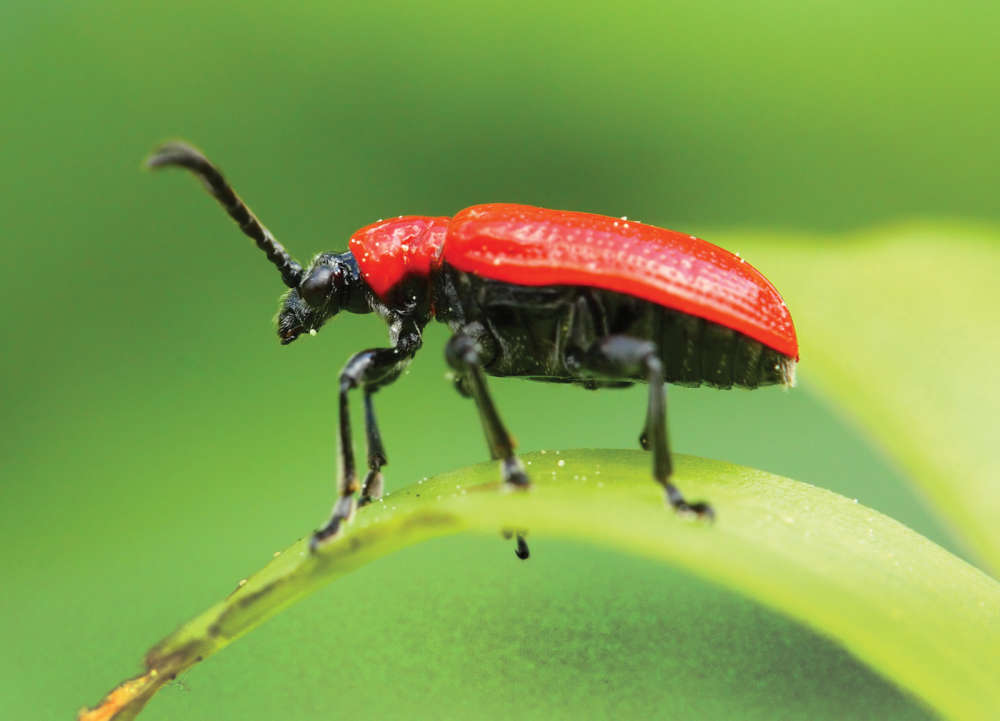
Plagued with Vine Weevils? Enraged by Lily Beetles? Despairing of Box Caterpillars? Flo Whitaker investigates three of the most troublesome gardening pests
Around the 6th Century BCE, a Chinese general, Sun Tzu, wrote a treatise on military strategy. Comprehensive, nuanced and thought-provoking, ‘The Art of War’ became essential reading for military leaders and politicians - and it’s still in print. Sun Tzu coined the phrase ‘Know your enemy’, and if fate hadn’t taken him down a military path, he could, perhaps, have been a great gardener.
The matt black vine weevil beetle has a snout-type ‘nose’, chews holes into leaf edges and lays spherical cream/ light brown eggs. The leaf damage is merely unsightly; juvenile grubs are the greatest concern. If there was a prize for the sneakiest garden pest, then vine weevil grubs would surely
be contenders. Cream-coloured, often lying in a ‘C’ shape, they burrow into soil, stealthily munch on roots, then hibernate until spring. Often, you’re not aware of their presence until a rootless plant suddenly collapses. By then, the plant is probably beyond help.
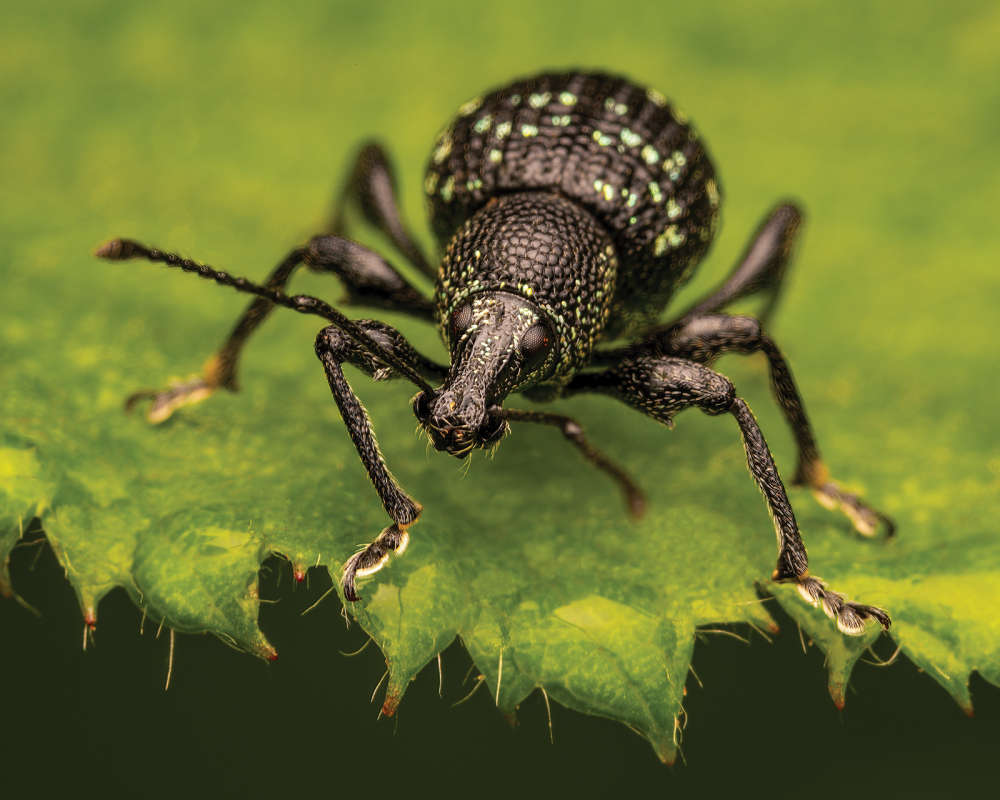
Potted plants are especially attractive to vine weevils. Infestations can be particularly troublesome in a greenhouse environment. Primulas, auriculas, cyclamen, heucheras, violas, fuchsias and strawberries are their favourite targets. They are most active at night – take a twilight stroll with a torch! In severe cases, a biological control using nematodes, (microscopic worms that infect weevil grubs) can be applied as a soil drench in autumn, killing off the grubs as they commence hibernation.
Box caterpillars are approximately 4cms long, so you’d think they’d be easy to spot, but their olive green, black and yellowish markings allow them to blend easily into the background. The first thing you’ll probably notice is bare patches appearing on your plants, along with the white ‘silk’ webbing that protects their cocoons.
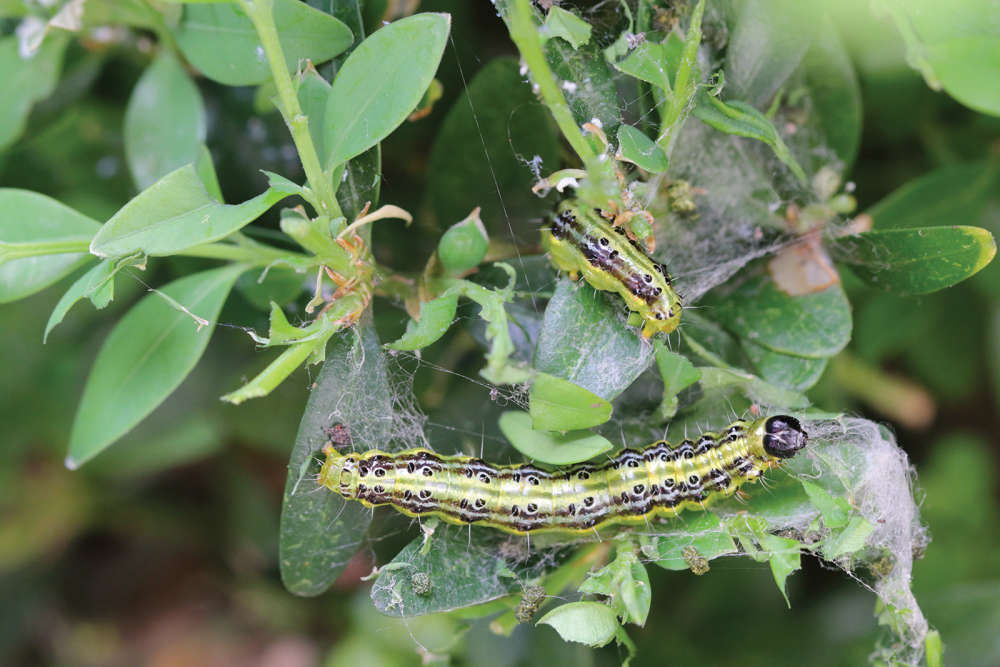
Another sign is powdery ‘frass’, (excrement - apologies if you’re having your lunch) scattered on the surrounding area. The caterpillars metamorphosise into moths of varying brown-ish/cream shades. These lay tiny eggs on the undersides of leaves, which hatch into caterpillars – and the cycle begins again. Adult caterpillars overwinter on box plants and re-emerge in spring. Caterpillars can be picked off by hand, but it’s not terribly easy, due to their camouflage colours and because they often hide away in the centre of a plant. Spray treatments are available; some more eco-friendly than others.
Whatever you use, carefully read instructions and never spray on windy days or when rain is forecast. Sprays are best used in early morning or dusk to avoid harming beneficial insects. Box, (Buxus) is an incredibly forgiving plant and will often re-generate from apparent death when coaxed with a good mulch and regular watering. Fortunately, the pest is specific to box only – no other plants will be affected.

Unlike box caterpillars, you’ll know the moment lily beetles arrive – their smart shiny red and black outfits are easy to spot. However, catching them in bright sunshine can be challenging as they’ll instantly drop to the ground if they see your shadow approaching, so make the most of overcast skies, or go beetle hunting early or late in the day. Adult beetles munch on foliage, but this damage is mostly cosmetic – it’s the voracious grubs that do most harm. They cling to leaf undersides, covered with their own excrement, (apologies, again) and can defoliate a plant within days.
Mature grubs fall to the ground, bury under the soil and pupate, emerging as adult beetles. Squashing beetles and destroying the vulnerable, soft-bodied grubs with a hosepipe jet of water gives good control. Pesticide treatments are available, but are non-specific and may harm other insects. Repellent sprays are an interesting recent addition to the gardener’s arsenal; apparently making plants taste unpalatable to predators. Some lily varieties claim to be beetle-resistant, on account of their unappetising foliage. All members of the lily family, (including fritillaries) are targeted, but other close relatives are occasionally affected, particularly Convallaria (Lily of the Valley) and Polygonatum (Soloman’s Seal).
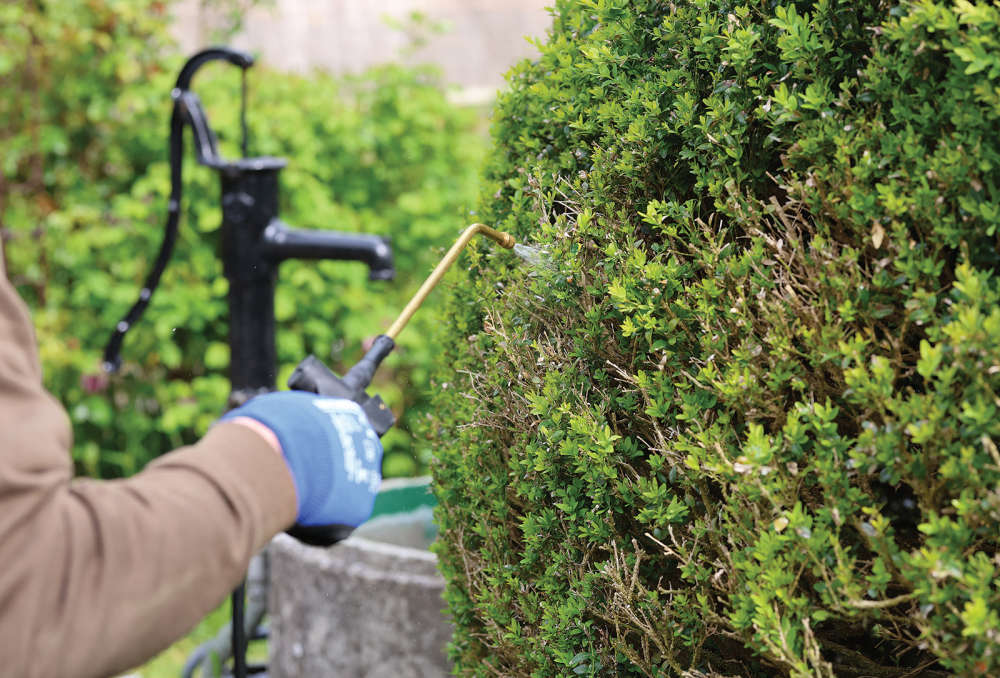
If pests or diseases strike, an otherwise healthy plant has a far greater chance of recovery than one that was already failing. Feeding the soil with annual mulches of compost or well-rotted manure will help your plants thrive – and survive.
When life, (in or out of the garden) throws up a conflict, it’s often prudent to settle for a truce. Pick your battles – you can’t win every war, but understanding your enemies will increase your chances of success. I’ll leave the last words to Sun Tzu; “He who knows when he can fight and when he cannot will be victorious.”

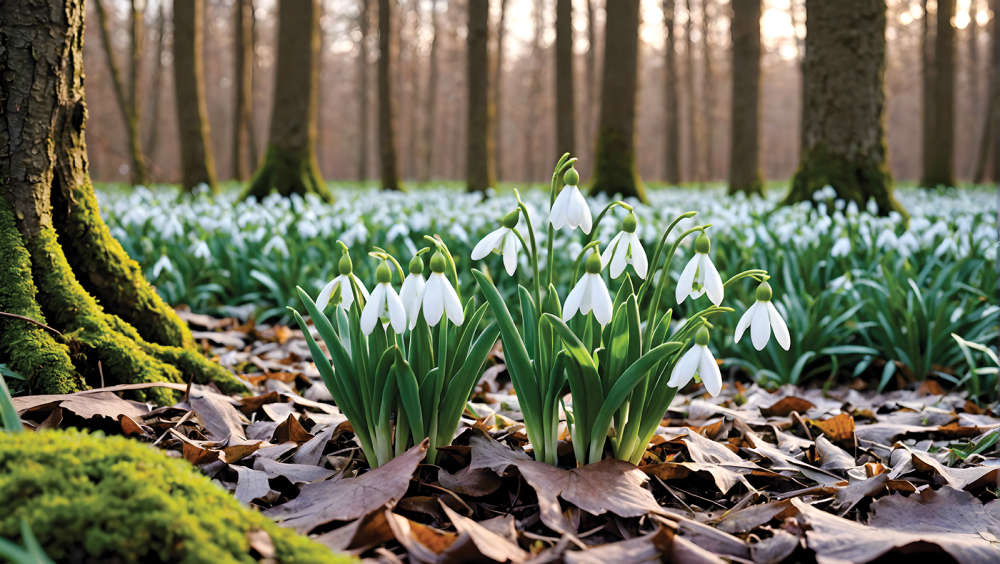 Blooming Times: Harbingers of Spring
Blooming Times: Harbingers of Spring
 Homes Extra: Home Sanctuary
Homes Extra: Home Sanctuary
 Home Style: Ancient & Modern
Home Style: Ancient & Modern
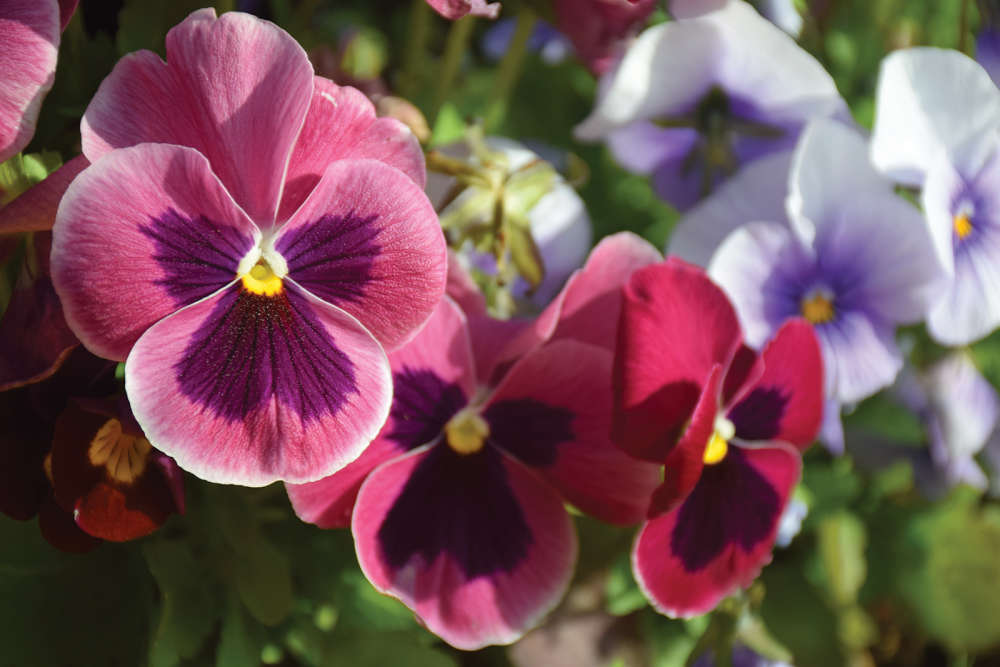 Blooming Times: Happy Faces
Blooming Times: Happy Faces
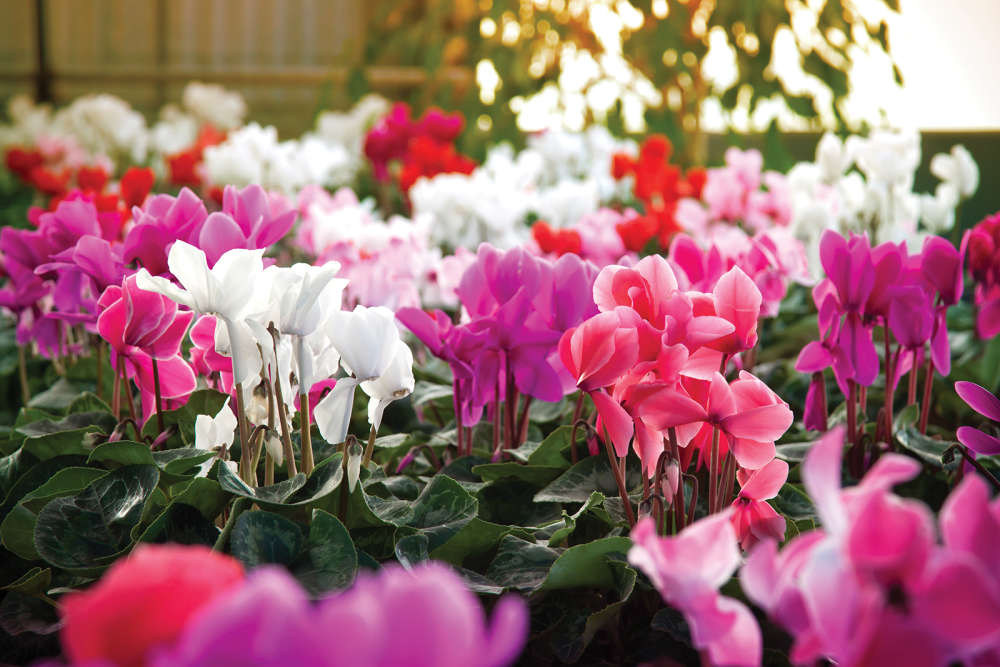 Blooming Times: Winter Sparklers
Blooming Times: Winter Sparklers
 Homes Extra: Restore, Repair, Recycle
Homes Extra: Restore, Repair, Recycle
 Home Style: A Scandi Winter's Tale
Home Style: A Scandi Winter's Tale
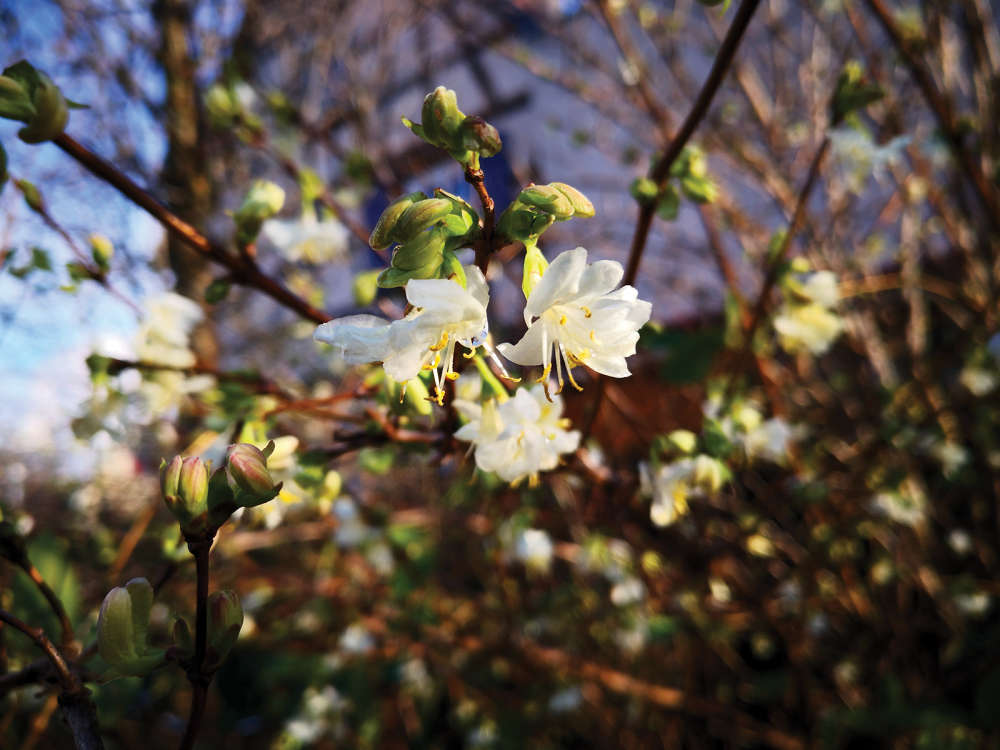 Blooming Times: Winter Wonders
Blooming Times: Winter Wonders
 Home Style: Bold, Brave & Beautiful
Home Style: Bold, Brave & Beautiful
 Blooming Times: The Answer Lies in the Soil
Blooming Times: The Answer Lies in the Soil
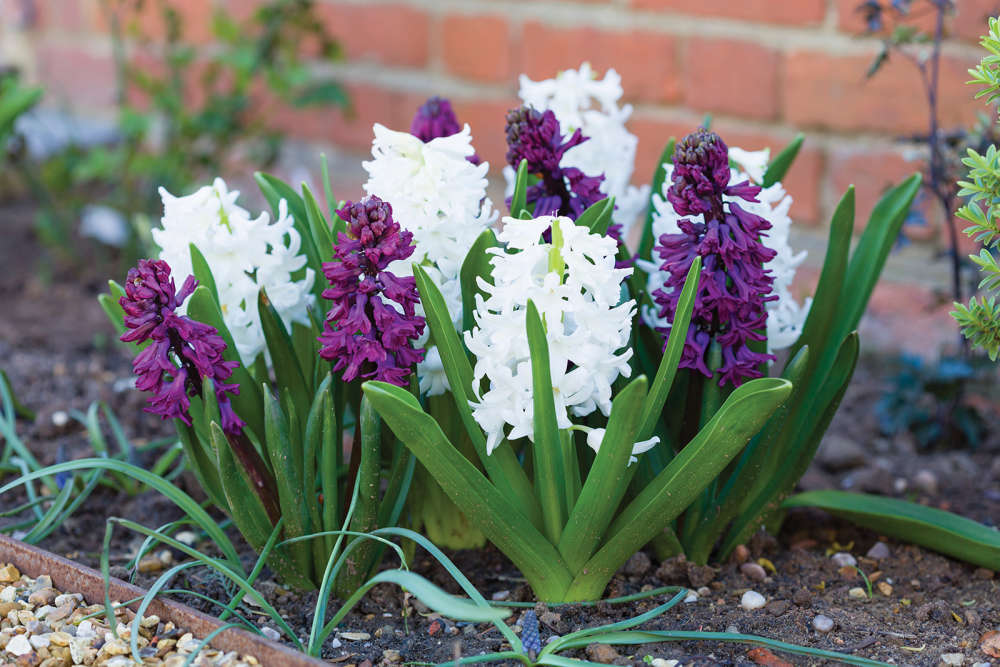 Blooming Times: Heavenly Hyacinths
Blooming Times: Heavenly Hyacinths
 Legendary Builds with Phoenix Construction Services
Legendary Builds with Phoenix Construction Services
 Bespoke Dreams from Eridge Green Kitchens
Bespoke Dreams from Eridge Green Kitchens
 10 Hot Years: iFit Fires & Flues
10 Hot Years: iFit Fires & Flues
 Home Style: Bold Type
Home Style: Bold Type
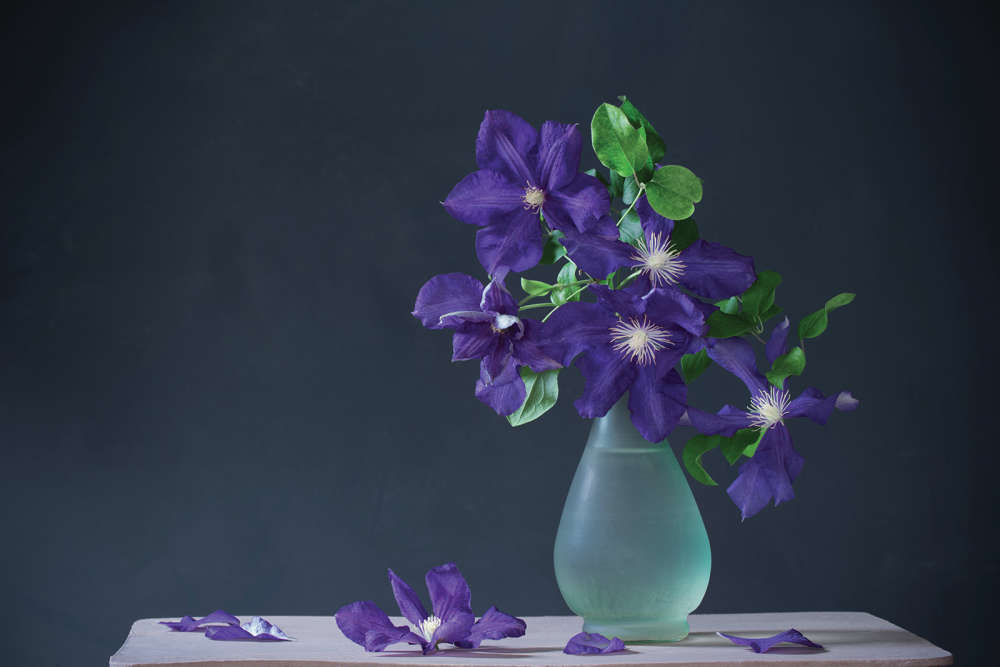 Blooming Times: The Sky's the Limit
Blooming Times: The Sky's the Limit
 Home Style: A Better Way of Life
Home Style: A Better Way of Life
 Homes Extra: Shed Space
Homes Extra: Shed Space
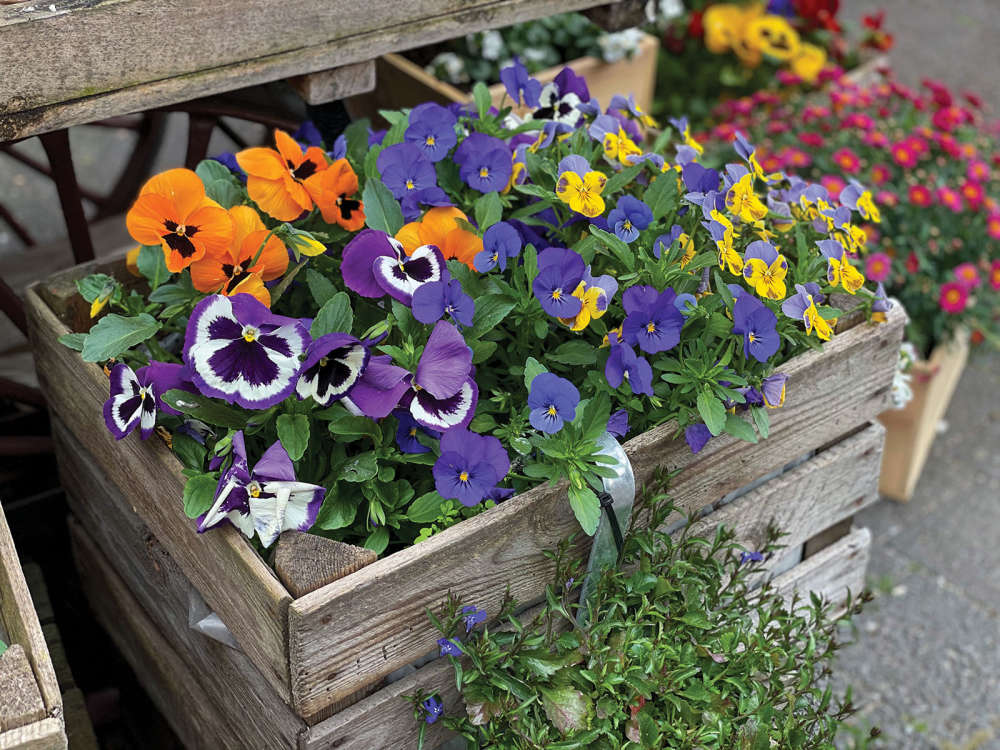 Blooming Times: Top of the Pots
Blooming Times: Top of the Pots
 Kids Zone: Get the Kids Growing
Kids Zone: Get the Kids Growing